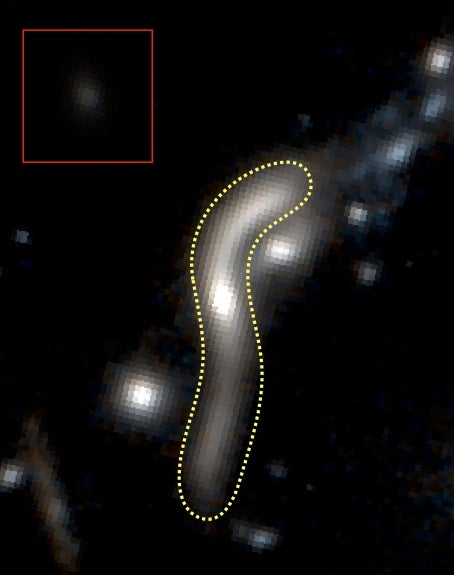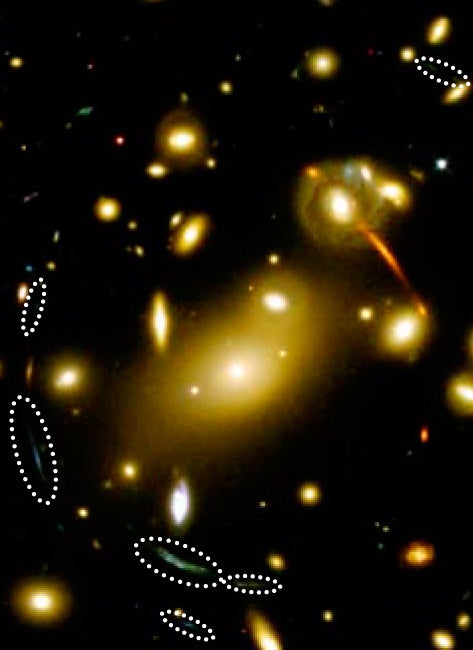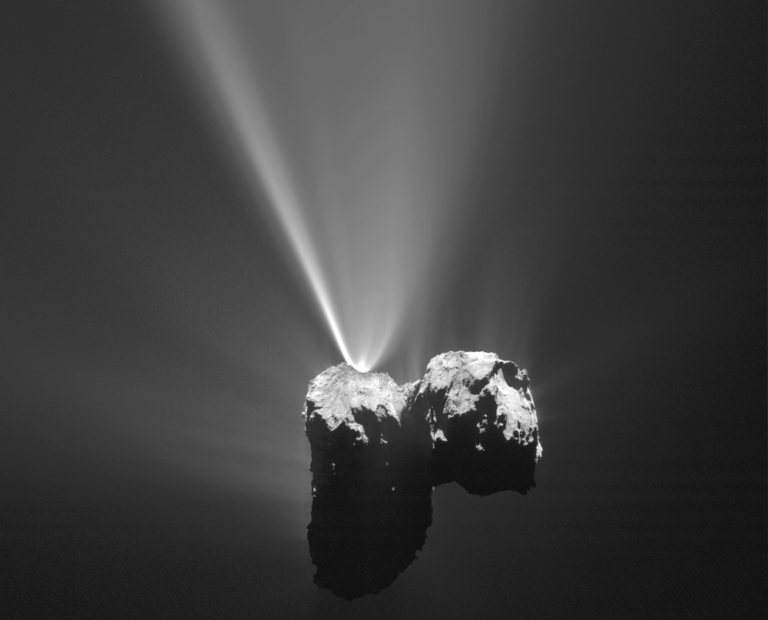eMACSJ1341-QG-1 exists at a time when the universe was just about four billion years old. It is a quiescent galaxy that is not forming new stars from its gas and dust. While it is not the farthest such galaxy detected, eMACSJ1341-QG-1 is the most highly magnified quiescent galaxy found to date. The discovery, published December 27 in the Astrophysical Journal Letters, is the result of work by team of astronomers led by Harald Ebeling of the Institute for Astronomy at the University of Hawaii. “We specialize in finding extremely massive clusters that act as natural telescopes and have already discovered many exciting cases of gravitational lensing,” he said in a press release. “This discovery stands out though, as the huge magnification provided by [the] eMACSJ1341 [galaxy cluster] allows us to study in detail a very rare type of galaxy.”
eMACSJ1341-QG-1 is rare because it is so quiet at a time when the universe was much younger. During this time, galaxies should be actively forming stars, not sitting quietly, a characteristic more reminiscent of older galaxies today. According to Mikkel Stockmann, a team member from the University of Copenhagen, “As we look at more distant galaxies, we are also looking back in time, so we are seeing objects that are younger and should not yet have used up their gas supply. Understanding why this galaxy has already stopped forming stars may give us critical clues about the processes that govern how galaxies evolve.”











